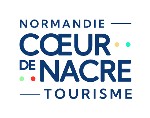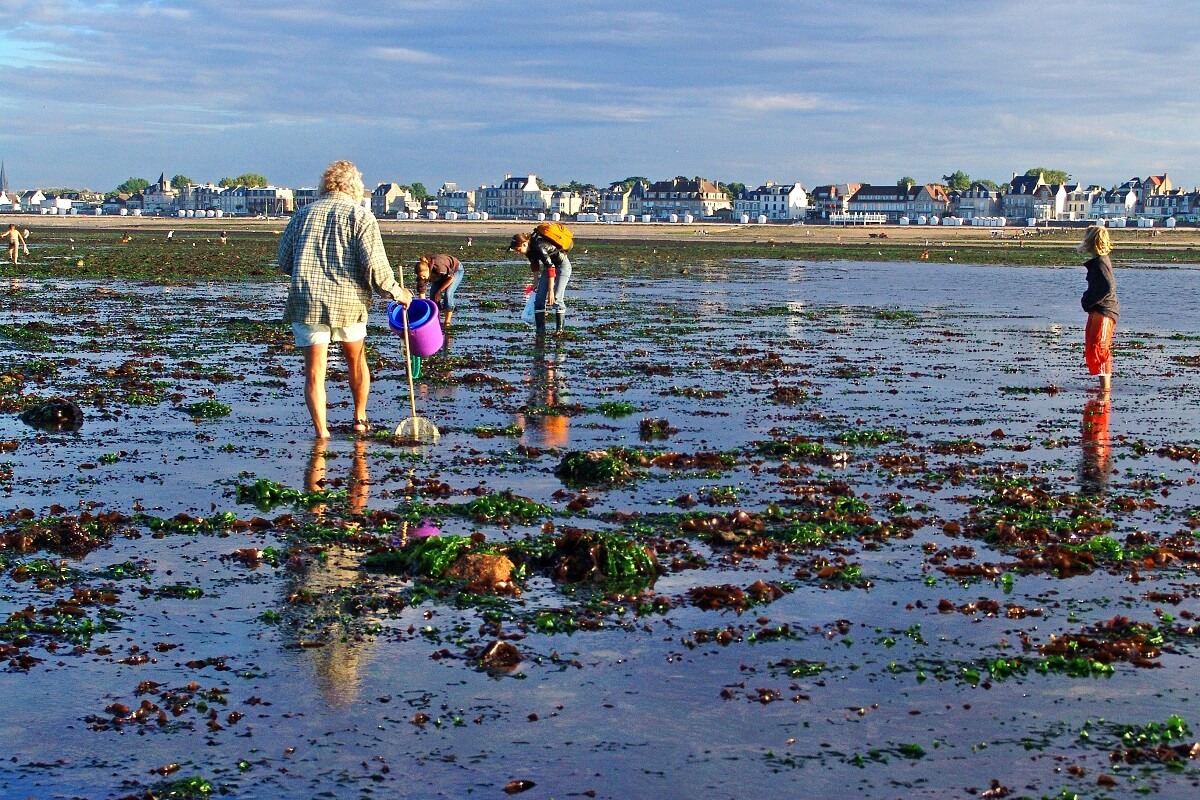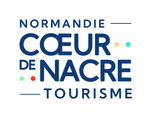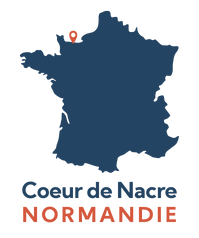On holiday, what we love is to be rocked by the tides for a fishing foot party ! On holiday, what we like is to be rocked by the tides.
This coming and going of the sea, which rises and falls, gives rise to landscapes and colours that change constantly.
In this article we tell you all about the practice of fishing on foot between Luc and Courseulles.
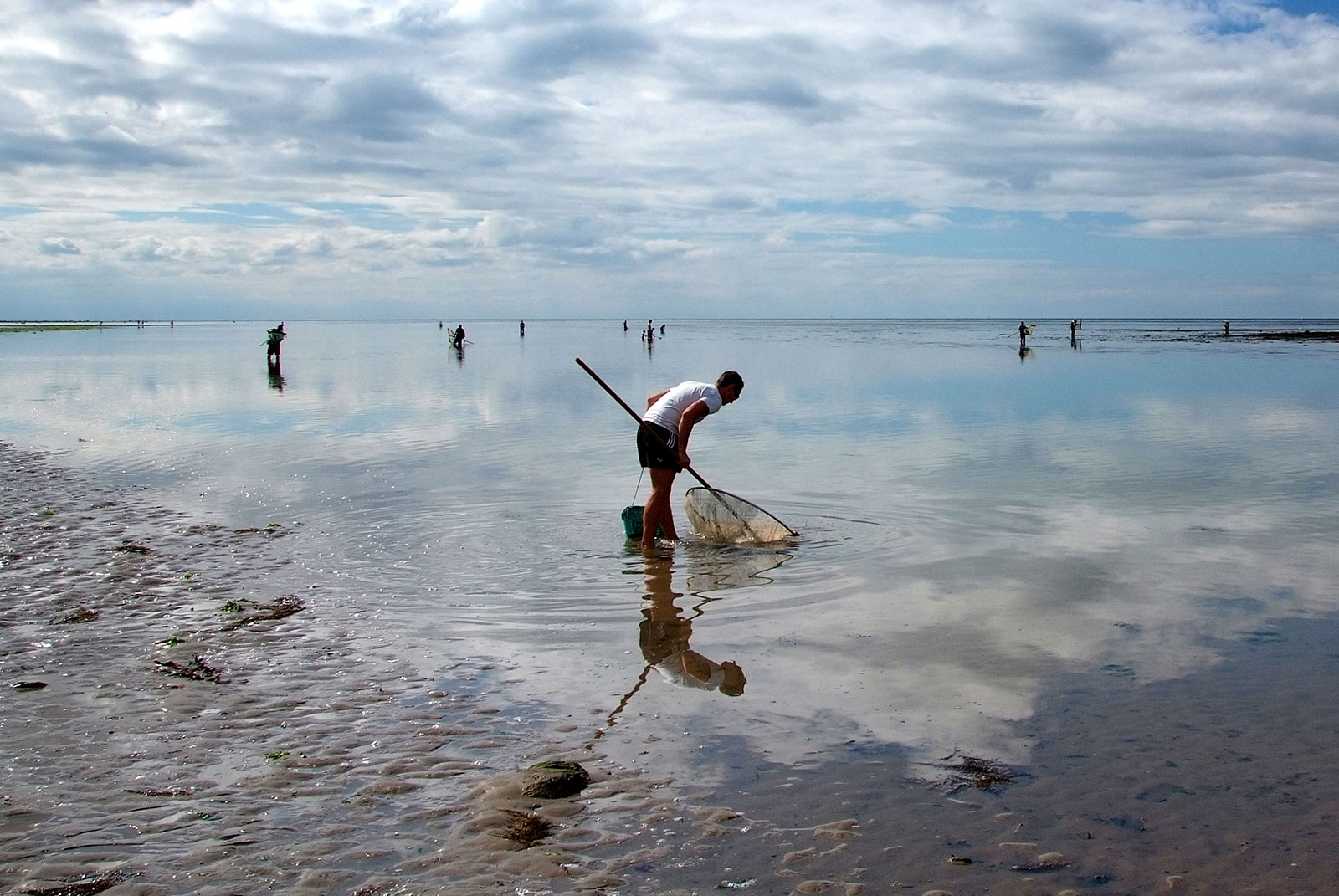
During the high tides, this is where the fishing is good! The great expanses of sand and rocks of the Côte de Nacre are revealed from a coefficient of 90.
Among the seaweed, under the stones and in the small puddles, a multitude of species can be found. Even the youngest children can go fishing on foot, and they love to catch periwinkles, crabs, curlers and bouquet with their hands or with a landing net!
The coastline from Bernières-sur-Mer to Luc-sur-Mer is THE spot for shellfishing in the department. Fishing on foot is mainly practiced from spring to autumn.
It is a family activity accessible to all, free of charge, which will inevitably bring back memories of childhood and holidays! Remember!
A pair of boots, an oilskin, a net, a bucket and off you go to the rocks for an afternoon in the open air in search of the evening aperitif!
But be careful, before setting out on the foreshore, don’t forget that sustainable and responsible fishing is regulated.
Find out about the decrees in force authorising or prohibiting the fishing of certain shellfish on our coasts.
What species can I fish for on the Côte de Nacre ?
Our beaches at Bernières-sur-mer, Saint-Aubin-sur-mer, Langrune-sur-mer and Luc-sur-mer are renowned for the diversity of their crustaceans: crabs, bouquets (open from 1 July to 28 February), grey shrimps, crabs and lobsters.
They are not the most abundant in shellfish.
If you are looking for beaches with a large supply of cockles and tellins, opt for the area from Merville-Franceville to Houlgate.
To be harvested, the animals must have reached a minimum size:
- The bouquet: 5 cm
- Grey shrimp: 3 cm
- Curlew: 6.5 cm
- Green crab: no minimum size (choose the largest)
- Mussels: 4 cm
- Periwinkle: No minimum size (choose the biggest)
- Clam: 4 cm
- Edible crab: 15 cm
- Whelk: minimum 4.5 cm, maximum 7 cm
- Cockle: 2.7 cm
- And if you are very lucky, lobster: 8.7 cm (cephalothoracic length)
Fishing for fish is also permanently authorised on the entire Calvados coastline, with the exception of sardines and eels.
Please note that certain species such as sea bass and sole are also regulated.
Ask for this ruler in our tourist office.
For more information on recreational fishing on foot and angling in Calvados:
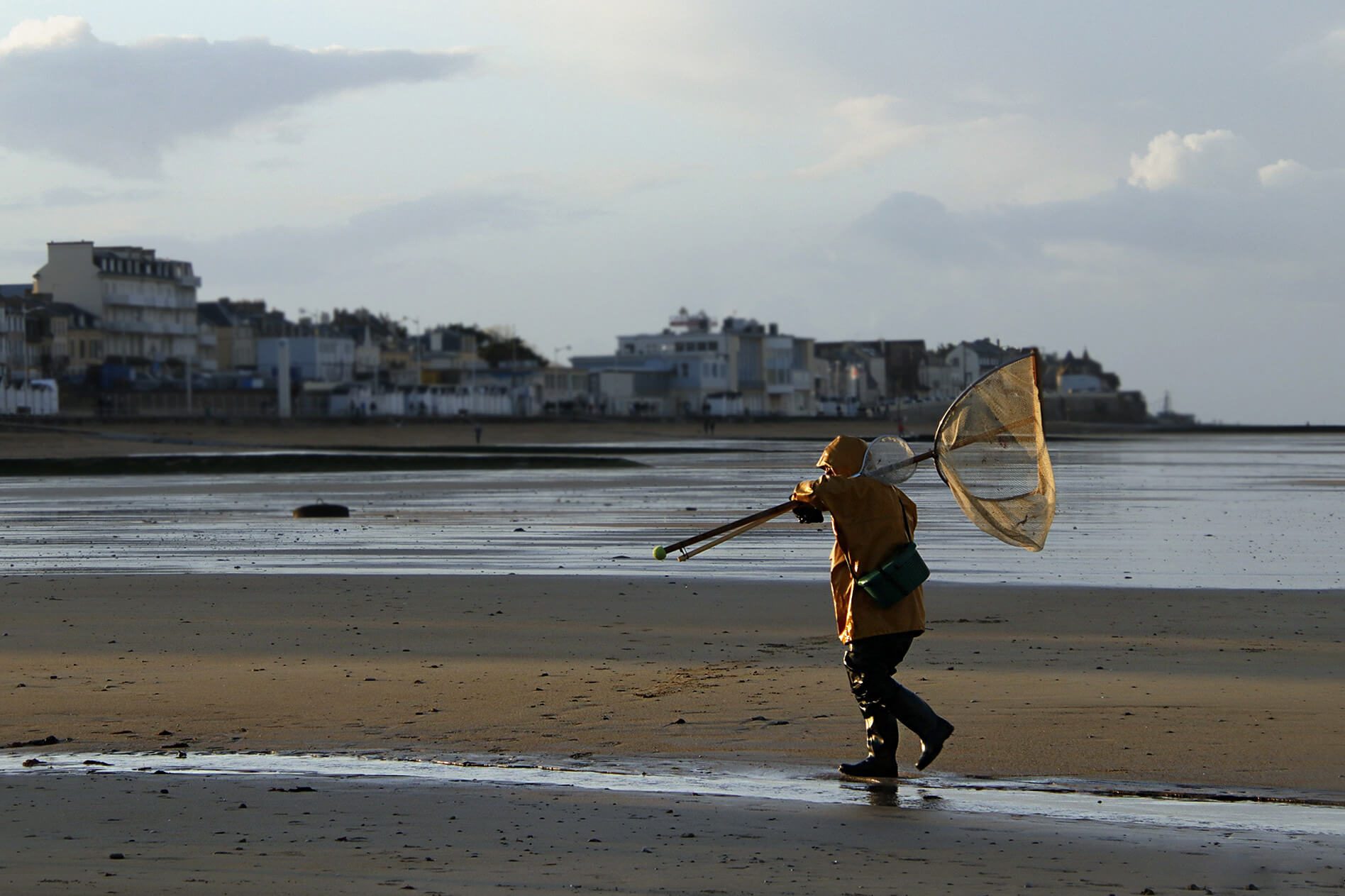
Some tips for safe fishing
- check the day’s weather forecast,
- check the tide times: fishing on foot takes place 2 hours before low tide,
- Take a windbreaker, waterproof shoes to avoid slipping, a cap and a watch,
- Take your mobile phone in a waterproof bag (emergency number: 196),
- Do not go fishing alone and tell someone where you are going to fish.
Good practices for sustainable and responsible fishing
- Always return the stones to their original position in order to protect the existing micro fauna and flora,
- Respect the regulations relating to fishing,
- Check the authorised sizes and quantities of fish caught,
- Respect the fishing and consumption bans in force,
- Do not remove algae from the rocks,
- Release female crustaceans with eggs in order to encourage the renewal of their populations,
- Only fish what you are sure you will eat,
- Eat the shellfish the same day.
Guide to fishing on foot
This little guide to fishing on foot in Calvados covers the important points to know before going fishing. It also gives a list and drawings of the main species to be found on the foreshore: prawns, green crabs, mussels, periwinkles, cockles, etc., as well as valuable advice on how to transport your catch and preserve it until you eat it.
How much shellfish can I catch ?
5 kg per species, per angler, per day
What tools, minimum sizes and quotas are needed for successful fish on foot ?
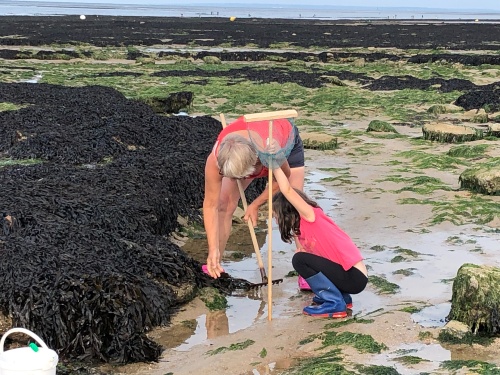
The harvesting of shellfish is limited to 5 kg per species, per fisherman and per day, while respecting the minimum catch sizes.
The harvesting of other species is limited to family consumption, so only fish what you are sure to eat.
As far as equipment is concerned, don’t overload yourself! Generally, your hands, a landing net and your sense of observation are enough!
The best tools are those that do not (or as little as possible) damage our marine environment :
- Your hands for winkles, cockles and crabs,
- A landing net or a net for shrimps, prawns and crabs,
- A knife for mussels, limpets and abalone,
- A small rake or claw for clams, cockles,
- A bucket or basket to bring in your catch of the day.
If you have not brought your own equipment, here are some addresses:
- Plaisance Deux Roues, 4 chemin de la Tuilerie à Courseulles-sur-Mer
- Zone Pêche, 5 rue de l’Anneau technique à Courseulles-sur-Mer
- Quai Ouest Marine, 8 Chemin de la Tuilerie à Courseulles-sur-Mer
- Point Vert, LD Clos Harrel Rue du Bout Varin à Douvres-La-Délivrande
Where and when can I go fishing on the Côte de Nacre ?
It is possible to fish all year round on the Côte de Nacre, but the best time (and the least cold!) is between April and November.
The coastline from Bernières-sur-mer to Luc-sur-mer is THE spot for shellfish fishing in the department. The fishing is only interesting from a tidal coefficient of 90.
Above this coefficient (up to 115), the rocks called “les îles de Bernières”, “les essarts de Langrune”, “le Quilhot” and “les rochers de Lion” are discovered. It is here that you will find many species hidden under the rocks and seaweed.
The collection of certain species is regulated and may be prohibited at certain times of the year.
- Authorised fishing of the bouquet: from 1st July to 28th February only,
- recreational fishing for mussels is once again authorised between Colleville-Montgomery and the Bernières-sur-mer aid station.
- All the regulations: www.calvados.gouv.fr
How to preserve shellfish until tasting ?
- Wash the shellfish in sea water,
- Store your catch in a cool place until you get home and then in the bottom of a refrigerator,
- Consume the shellfish within 24 hours, taking care to let them drain for 12 hours and to wash them well before cooking,
- Open shellfish to be eaten raw at the last moment.
Did you know that? Fish, shellfish and crustaceans are good for your health! They contain essential vitamins (A, D, E, B6, B12), essential trace elements and omega-3 and little omega-6.
Can seaweed be eaten ?
Yes, some seaweed is edible, either fresh or dried. Seaweed harvesting is an ancient practice that has been forgotten for a while but is now coming back into fashion.
Attached to the rocks and pebbles of the foreshore, sea lettuce and nori are the most popular edible seaweeds.
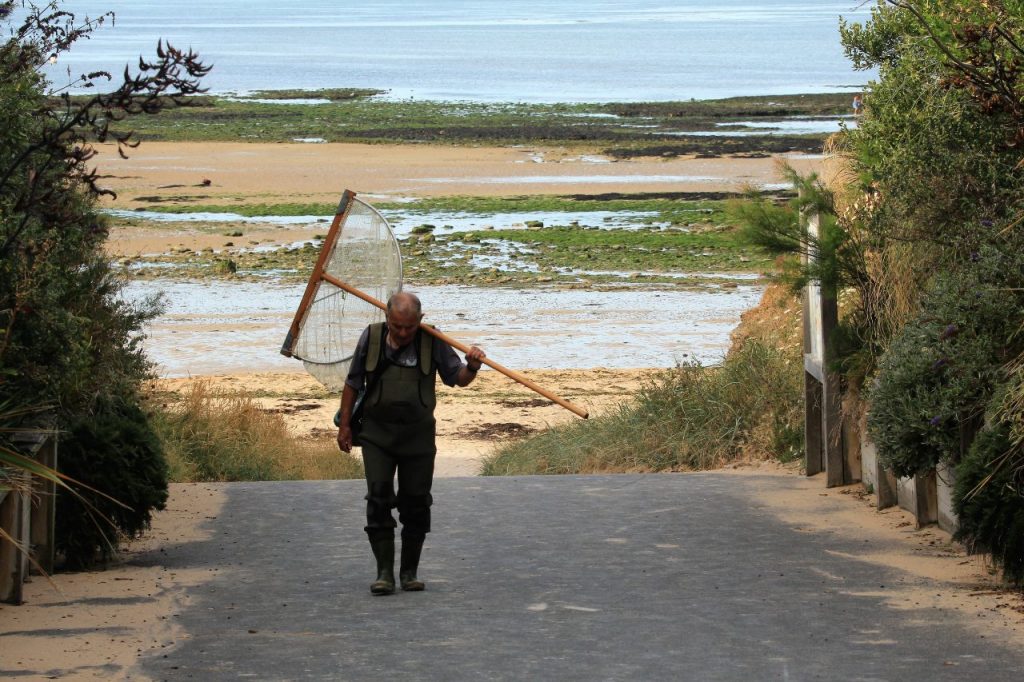
Where can I get my fishing tackle?
Located in the town of Courseulles-sur-Mer, the Zone Pêche shop offers you the opportunity to buy fishing equipment and tackle as well as all types of lures and baits, for leisure fishing, sea or river fishing.
David will be delighted to welcome you to his shop, to give you advice and guide you on the best fishing practices to adopt on the Côte de Nacre.
Also worth noting: the presence of an outdoor textile section for fishing and underwater hunting and fish smokers. A repair service for rings and rods can also be offered.
See also:
- Fishing regulations
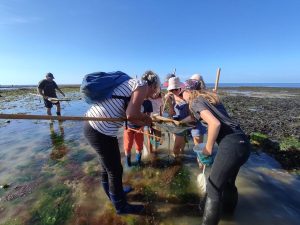 Everything you need to know about the regulations governing the practice of fishing on foot in the Cœur de Nacre… Read more: Fishing regulations
Everything you need to know about the regulations governing the practice of fishing on foot in the Cœur de Nacre… Read more: Fishing regulations - Fishing on foot
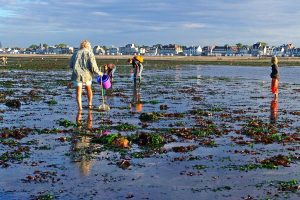 On holiday, what we love is to be rocked by the tides for a fishing foot party ! On holiday,… Read more: Fishing on foot
On holiday, what we love is to be rocked by the tides for a fishing foot party ! On holiday,… Read more: Fishing on foot
